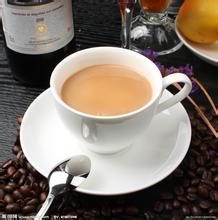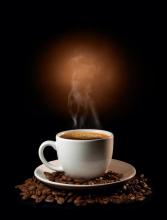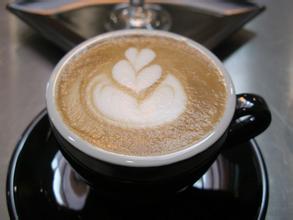Introduction to the Baking degree of Fine Coffee Bean Manor with the characteristics of Colombian Coffee Variety producing area
In 1501, the Spaniard R.de Bastidas first reached the northern coast of Colombia and founded the city of Santa Marta in 1525. In 1533, P.de Eredia established Cartagena. In 1535, G. Jimenez de Quesada led the Spanish colonial army into the interior of Colombia, conquered the Chibucha, established the city of Bogota, and Colombia became a Spanish colony. At the beginning
European colonists come to Colombia
European colonists come to Colombia
Under the jurisdiction of the Governor of Peru, the Spanish royal family established the Governor of New Granada in Bogota in 1718 and was directly ruled by the Governor. Under the Spanish colonial rule, the Indians were brutally exploited and the native whites were squeezed. Indians continued to revolt, and native-born whites held an uprising in 1781 (see New Granada uprising). Peru gained independence in 1824 when Colombian and Peruvian forces defeated the Spanish colonial army. During the war with Bolivar's army in Peru, Santander took over as president and presided over the affairs of Colombia. Santander advocated the establishment of a federal regime and United local forces against Bolivar's political proposition of unity and unity. Factional struggles within the Colombian Congress and government have become increasingly acute.
In April 1826, the local rulers of Venezuela, headed by Pais, and those who opposed the new Granada, headed by Santander, demanded the establishment of a separate state. Through the mediation of Bolivar, separatist activities have been temporarily stopped, but internal contradictions and factional struggles still exist.
The Congress of Colombian National Representatives was held in Okania on May 8, 1828. There was a sharp conflict between the centralized faction led by Bolivar and the federalist faction represented by Santander. After that, the separatist tendency in various places became more and more obvious.
In November 1829, Venezuela issued a statement withdrawing from the Republic of Greater Columbia
It has long been thought to be monopolized and underwritten by Japanese roasters. In recent years, the Colombian government has asked Japanese roasters to withdraw some of their shares in order to encourage free trade. The Colombian National Federation of Coffee growers is also paying more and more attention to the market. In 2007, Luis Fernando Sambel, intellectual property director of the National Federation of Coffee growers of Colombia, said in an interview with a Chinese reporter, "We are doing a feasibility study on entering the Chinese market." He believes that Chinese consumers, like Japanese consumers, can change from liking tea to also liking coffee.
Here, I would like to tell you that Uncle Dou, as the only merchant in China to acquire the right to collect, has been given such a purchase opportunity. So you are very lucky to see such high-quality coffee from the original area in Haofang Coffee.
Colombian coffee culture is also unique, coffee is the pride of Colombians, Colombians like to talk about a few things, in addition to their football, which was once one of the best in the world, is their proud coffee. Drinking coffee in Colombia is a pleasure. Not only is it necessary three times a day, but the streets are full of cafes and customers are full of seats from morning till night. There is no instant saying in the cafe. It is now cooked and sold. The young lady pours it with exquisite porcelain bowls, respectfully presents it to the customers, and adds sugar at will. The aroma is pervasive in the room, the bowl is sweet and delicious, and the slow taste is endless in aftertaste. No wonder the local people are addicted to it.
If you visit a friend or a government official in Colombia, you will first get a cup of Colombian coffee and refill it several times during the conversation. So on one visit, you will taste several cups of Colombian coffee. And there are many brands of Colombian coffee, all of which have their own unique tastes. In addition, there are many products of coffee as raw materials, such as coffee sugar, coffee wine, coffee bean handicrafts and so on. There are also many ways to drink coffee, some with milk, some without milk, some with foam, some with cold coffee and iced coffee. Wherever you go in Colombia, there is a coffee shop in even a small village. Coffee is provided free of charge at many airports.
Coffee is provided free of charge at all offices in Colombia, like our pure water. After work, there is a special waiter to prepare the coffee. The last coffee at 10:00, you can ask the waiter to serve it again at any time if you need it. So coffee is the same with them as we drink tea.

Important Notice :
前街咖啡 FrontStreet Coffee has moved to new addredd:
FrontStreet Coffee Address: 315,Donghua East Road,GuangZhou
Tel:020 38364473
- Prev

Introduction to the description of the flavor of high-quality coffee beans in the producing area of citrus-flavored sweet Rwandan coffee
But in any case, the soft and full-bodied taste of the country's coffee is great. Rwanda is a small African country, and the local people are relatively poor, but it produces straight and very good coffee. Unlike its neighbors Kenya and Ethiopia, Rwanda's coffee is mainly round bourbon. The taste is not as prominent as Ethiopia and Kenya, but it is extremely uniform.
- Next

Characteristics of Hawaiian Coffee Variety producing area introduction of Fine Coffee Bean Flavor Manor
The real Hawaiian Kona coffee makes people enjoy the unique pleasure and leads you slowly into the detached state of tasting coffee. And this comes entirely from the oldest Arabica coffee tree. Hawaii is the only state in the United States that grows coffee, which is grown on the five major islands of the Hawaiian Islands: Oahu, Hawaii, Maui, Kauai and Moroca.
Related
- Detailed explanation of Jadeite planting Land in Panamanian Jadeite Manor introduction to the grading system of Jadeite competitive bidding, Red bid, Green bid and Rose Summer
- Story of Coffee planting in Brenka region of Costa Rica Stonehenge Manor anaerobic heavy honey treatment of flavor mouth
- What's on the barrel of Blue Mountain Coffee beans?
- Can American coffee also pull flowers? How to use hot American style to pull out a good-looking pattern?
- Can you make a cold extract with coffee beans? What is the right proportion for cold-extracted coffee formula?
- Indonesian PWN Gold Mandrine Coffee Origin Features Flavor How to Chong? Mandolin coffee is American.
- A brief introduction to the flavor characteristics of Brazilian yellow bourbon coffee beans
- What is the effect of different water quality on the flavor of cold-extracted coffee? What kind of water is best for brewing coffee?
- Why do you think of Rose Summer whenever you mention Panamanian coffee?
- Introduction to the characteristics of authentic blue mountain coffee bean producing areas? What is the CIB Coffee Authority in Jamaica?

